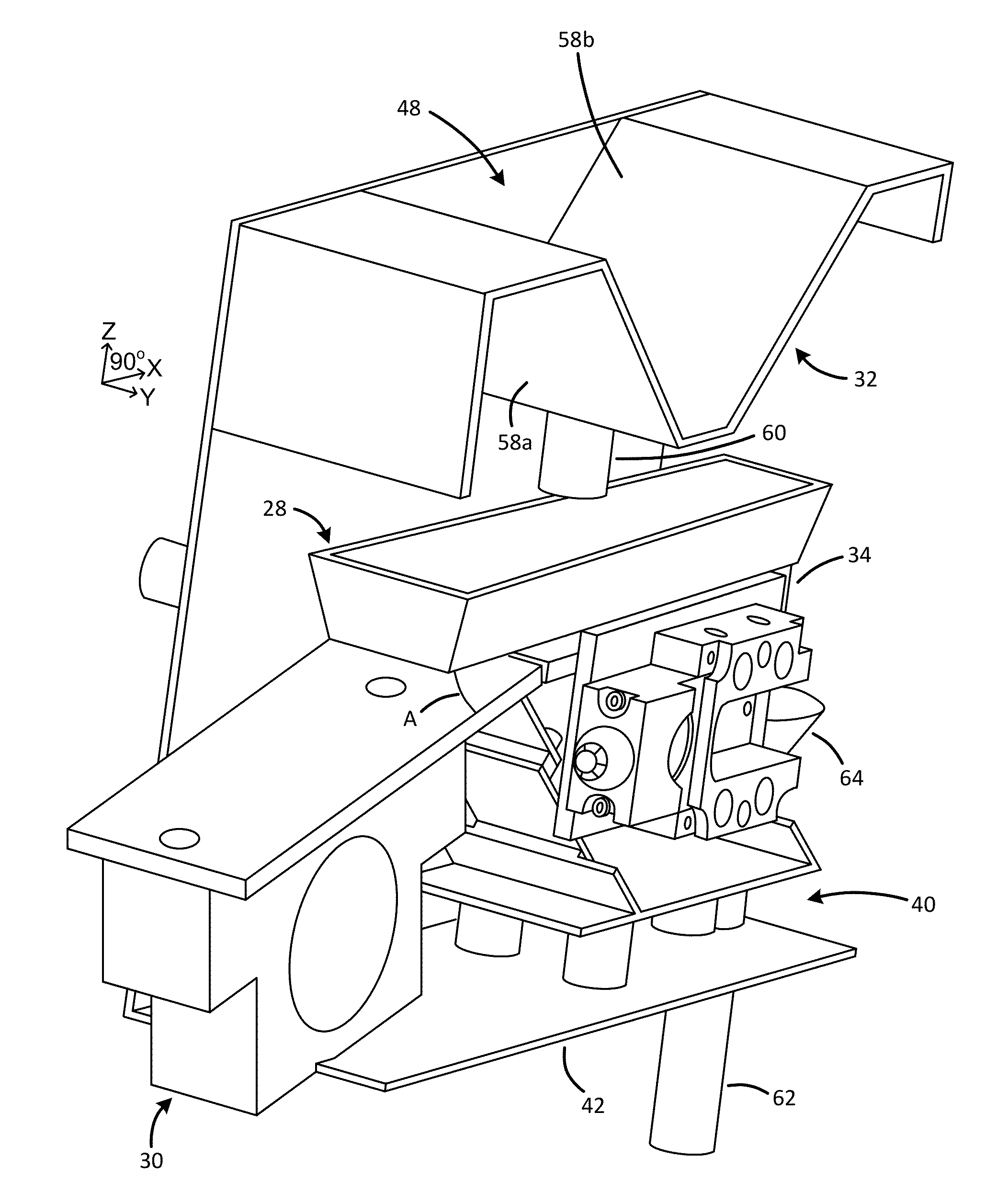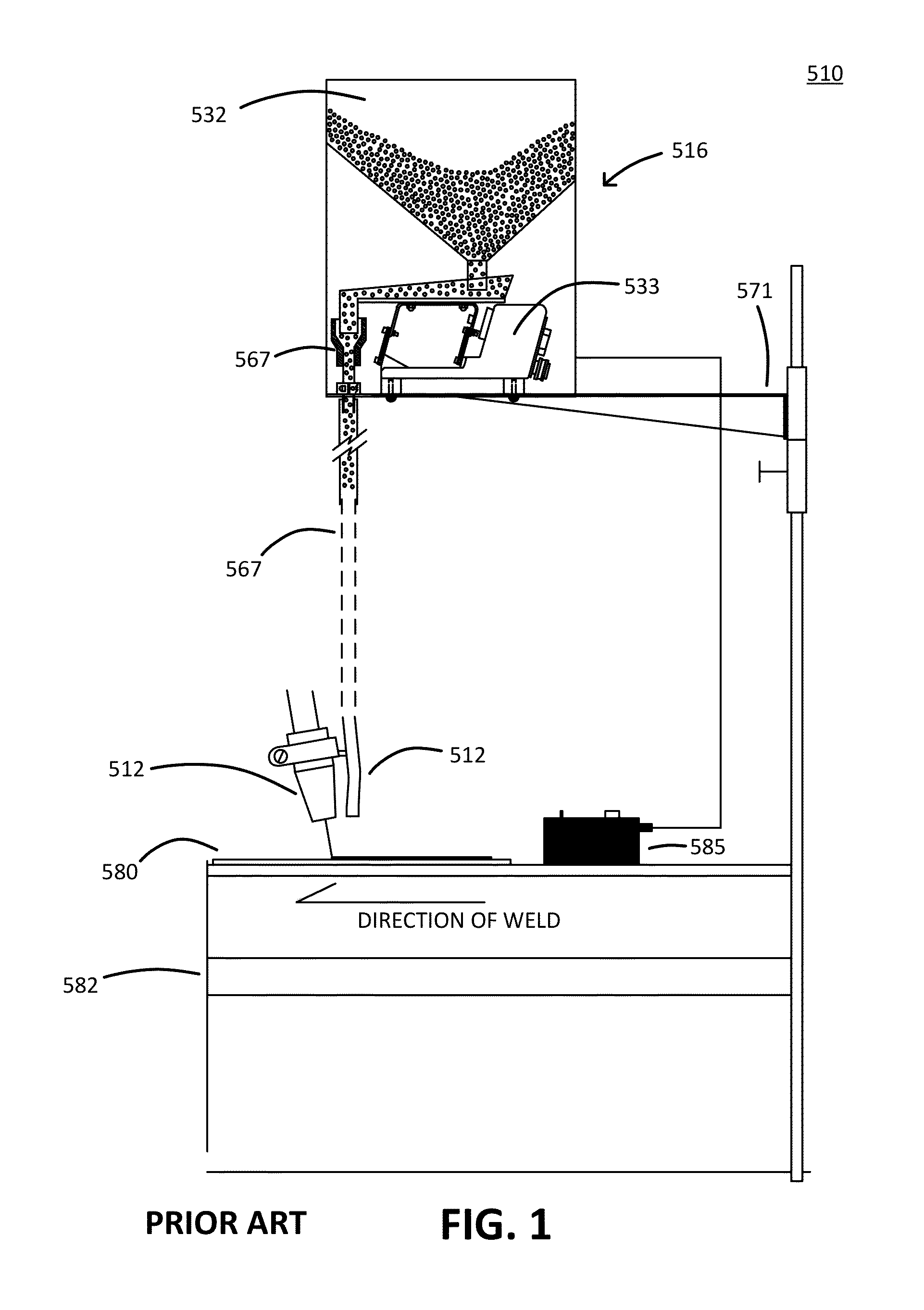Automatic system for abrasive hardfacing
a technology of automatic system and hardfacing, which is applied in the field of metalworking process, can solve the problems of undesirable amount of abrasives ending up on the floor, affecting the quality of abrasives, and so as to reduce the waste of wear resistant feed particles, reduce and reduce the effect of reducing the chance of nucleation
- Summary
- Abstract
- Description
- Claims
- Application Information
AI Technical Summary
Benefits of technology
Problems solved by technology
Method used
Image
Examples
example 1
Comparison of Hardfacing Samples with Tungsten Carbide Particles with Stationary Sample and Moving Sample
[0125]FIGS. 10A and 10B compare hardfacing samples with made with a lateral travel speed of 12 inches per minute and a weaving pattern. The feed wire was mild steel and the carbide particles were tungsten carbide particles (initial size 12-24 mesh). The wire feed speed and the voltage were approximately the same for both samples (350-375 inches / minute and 26 V). The carbide drop rate was 5 g / sec for both samples. FIG. 10A illustrates a hardfacing applied to a stationary sample with a moving arc welding head at an oscillation frequency of 4 Hz and an amplitude of 1 mm. The measured area fraction of carbide particles was 16%, the top height measurement labeled 2 was 0.1364 inches, the bottom height measurement labeled 3 was 0.0944 inches, and the width measurement was 0.5748 inches. FIG. 10B illustrates a hardfacing applied to a moving sample with a stationary arc welding head at a...
example 2
Comparison of Hardfacing Samples with Silicon Carbide Particles with Stationary Sample and Moving Sample
[0128]FIG. 13A shows a cross-sectional micrograph (50× magnification) of a hardfacing made with silicon carbide particles, a moving workpiece and a stationary weld gun. The percentage of hardfacing area with hardness 60 HRC and above is 100%.
[0129]FIG. 13B shows a cross-sectional micrograph (50× magnification) of a hardfacing made with silicon carbide particles, a stationary workpiece and a moving weld gun. The percentage of hardfacing area with hardness 50 HRC and below is 100%. The numerical labels indicate hardness values (HRC).
[0130]FIG. 14 shows another cross-sectional micrograph (50× magnification) of the same hardfacing as in FIG. 13A, made with a stationary workpiece and a moving weld gun. The percentage of hardfacing area with hardness 50 HRC and below is 100%. The numerical labels indicate hardness values (HRC).
PUM
| Property | Measurement | Unit |
|---|---|---|
| frequency | aaaaa | aaaaa |
| frequency | aaaaa | aaaaa |
| volume fraction | aaaaa | aaaaa |
Abstract
Description
Claims
Application Information
 Login to View More
Login to View More - R&D
- Intellectual Property
- Life Sciences
- Materials
- Tech Scout
- Unparalleled Data Quality
- Higher Quality Content
- 60% Fewer Hallucinations
Browse by: Latest US Patents, China's latest patents, Technical Efficacy Thesaurus, Application Domain, Technology Topic, Popular Technical Reports.
© 2025 PatSnap. All rights reserved.Legal|Privacy policy|Modern Slavery Act Transparency Statement|Sitemap|About US| Contact US: help@patsnap.com



